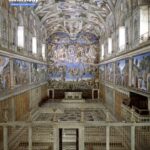9 Fascinating Facts About the Tower of Pisa That Will Truly Amaze You
The Tower of Pisa, better known as the Leaning Tower of Pisa, is not just an architectural marvel—it is a symbol of resilience, flawed beauty, and the enduring charm of human creativity. Located in the historic city of Pisa, Italy, this iconic structure attracts millions of visitors each year who come not just to see a tower, but to witness a miracle of physics that has stood the test of time.
- 🏛️ What Is the Tower of Pisa?
- 📖 History of the Tower of Pisa
- 🗓️ Timeline of the Tower of Pisa
- 🧠 9 Fascinating Facts About the Tower of Pisa
- ❓ Frequently Asked Questions (FAQs)
- Q1: Why does the Tower of Pisa lean?
- Q2: Can you go inside the tower?
- Q3: Is the Tower of Pisa still leaning?
- Q4: How tall is the tower?
- Q5: Is the Leaning Tower part of something larger?
- ✨ Significance of the Tower of Pisa
- 💐 Wishing & Observance
- 📌 Important Points to Remember
- 💡 Importance in Our Life and Society
- ✅ Conclusion: The Tower That Taught the World to Lean with Grace
- 📣 Final Thought
From accidental tilts to massive engineering feats, the Tower of Pisa tells a story that blends history, art, science, and cultural pride. In this detailed guide, we’ll explore everything about the Tower of Pisa—its history, fascinating facts, significance in daily life, observances, societal importance, and more—all written in a friendly and human-centered tone.
🏛️ What Is the Tower of Pisa?
The Tower of Pisa is a freestanding bell tower of the cathedral of the Italian city of Pisa, known worldwide for its unintended tilt. It is part of the Piazza dei Miracoli (Square of Miracles), a UNESCO World Heritage Site.
Originally designed to stand vertically, the tower began leaning due to unstable foundation soil during construction. Despite this “flaw,” the structure remains standing and is now one of the most recognizable landmarks in the world.
📖 History of the Tower of Pisa
🔹 The Birth of a Wonder
Construction Began: August 9, 1173
Architect (probable): Bonanno Pisano or Diotisalvi (historical dispute)
Intended Purpose: Bell tower for the nearby Pisa Cathedral
Material: White and grey marble
Height: ~56 meters (on the high side)
Weight: ~14,500 metric tons
🔹 A Tilted Journey Through Time
The construction of the tower occurred in three stages over 199 years due to wars, financial difficulties, and the tilt that appeared after only three stories were built.
🗓️ Timeline of the Tower of Pisa
| Year | Event |
|---|---|
| 1173 | Foundation laid; construction begins |
| 1178 | Tilt begins after third floor; construction halted |
| 1272 | Work resumes on upper floors |
| 1319 | Seventh floor completed |
| 1372 | Bell chamber added; construction completed |
| 1990 | Closed for stabilization work |
| 2001 | Reopened after engineering corrections |
| 2008 | Declared stable for 200 years |
🧠 9 Fascinating Facts About the Tower of Pisa
It Wasn’t Meant to Lean
The iconic tilt was caused by poor soil foundation—a mix of clay, sand, and shells.It Took Nearly 200 Years to Complete
Construction began in 1173 and ended in 1372, interrupted by wars and the leaning problem.It’s a Bell Tower, Not a Watchtower
The tower houses seven bells, each tuned to a musical note.It Has Been Straightened Slightly
Engineers reduced the lean by 43 centimeters between 1990 and 2001.You Can Climb It!
There are 294 steps to the top for a panoramic view of Pisa.It Has Survived Earthquakes
The soft soil that caused the tilt also cushioned seismic shocks, helping the tower survive.It Was Used as a Nazi Observation Post
During WWII, German forces used it, but American troops never bombed it—impressed by its beauty.Galileo’s Experiments Might Be a Myth
It’s believed Galileo dropped balls of different masses to study gravity here—but evidence is scarce.It’s Now Safer Than Ever
After restoration, experts say it should remain stable for at least 200 more years.
❓ Frequently Asked Questions (FAQs)
Q1: Why does the Tower of Pisa lean?
A: Due to unstable subsoil that couldn’t support the weight of the structure, causing it to tilt during early construction.
Q2: Can you go inside the tower?
A: Yes! Visitors can climb the spiral staircase to the top, although tickets are limited and must be reserved in advance.
Q3: Is the Tower of Pisa still leaning?
A: Yes, but much less. After stabilization, the lean is about 4 degrees, compared to over 5 degrees earlier.
Q4: How tall is the tower?
A: Around 56 meters on the high side and 55.86 meters on the low side.
Q5: Is the Leaning Tower part of something larger?
A: Yes! It’s part of the Cathedral of Pisa complex, which includes the Duomo, Baptistery, and Camposanto.
✨ Significance of the Tower of Pisa
🌍 Cultural Symbol
The tower represents Italian heritage, medieval engineering, and human imperfection embraced as beauty.
🧭 Tourism Anchor
It is one of the most photographed monuments globally, attracting over 5 million tourists annually, crucial to Pisa’s economy.
🏗️ Architectural Study
It’s a global case study in soil mechanics, structural failure, and restoration techniques.
⛪ Religious Importance
As a bell tower, it was part of a cathedral meant to honor the Virgin Mary and symbolize the city’s devotion to Christianity.
💐 Wishing & Observance
Here’s a warm wish for all who dream of visiting or celebrating the Tower of Pisa:
“May your path be as remarkable as the Leaning Tower—standing tall, even when life leans unexpectedly.”
✨ Observances:
Italian National Day (June 2) – Celebrated with pride, the tower is illuminated.
UNESCO Day (November 16) – As a UNESCO site, it receives global acknowledgment.
World Tourism Day (September 27) – Recognized as a prime travel destination.
📌 Important Points to Remember
Entry Fee: ~€20 (subject to change)
Photography Tip: Best photos are in the early morning or late evening to avoid crowds.
Fun Pose: Don’t forget to take a “holding up the tower” photo!
Location: Pisa, Tuscany, Italy—just a short train ride from Florence.
💡 Importance in Our Life and Society
🔍 Daily Life Impacts:
For Locals: The tower generates jobs, income, and cultural identity.
For Tourists: A once-in-a-lifetime experience that inspires curiosity and historical interest.
For Students: A live lesson in engineering, architecture, and cultural heritage.
💞 Societal Value:
Preservation Symbol: Shows the importance of maintaining historic structures.
Unity in Diversity: Attracts global tourists of all faiths and backgrounds.
Human Imperfection: Its beauty lies in its flaw—teaching us that imperfection is powerful.
✅ Conclusion: The Tower That Taught the World to Lean with Grace
The Tower of Pisa stands as a metaphor for life itself—it didn’t collapse under pressure, it tilted, adapted, and endured. What began as a design flaw is now one of the greatest architectural attractions in the world. Its charm lies not in perfection but in its defiance of expectations.
From medieval masons to modern-day tourists, the tower has touched millions, offering more than a view—it offers a philosophy. The Tower of Pisa reminds us to stand tall with grace, even when the ground beneath us is uncertain.
📣 Final Thought
“The Tower of Pisa isn’t falling—it’s simply standing with style. A true icon of strength in imperfection.”








